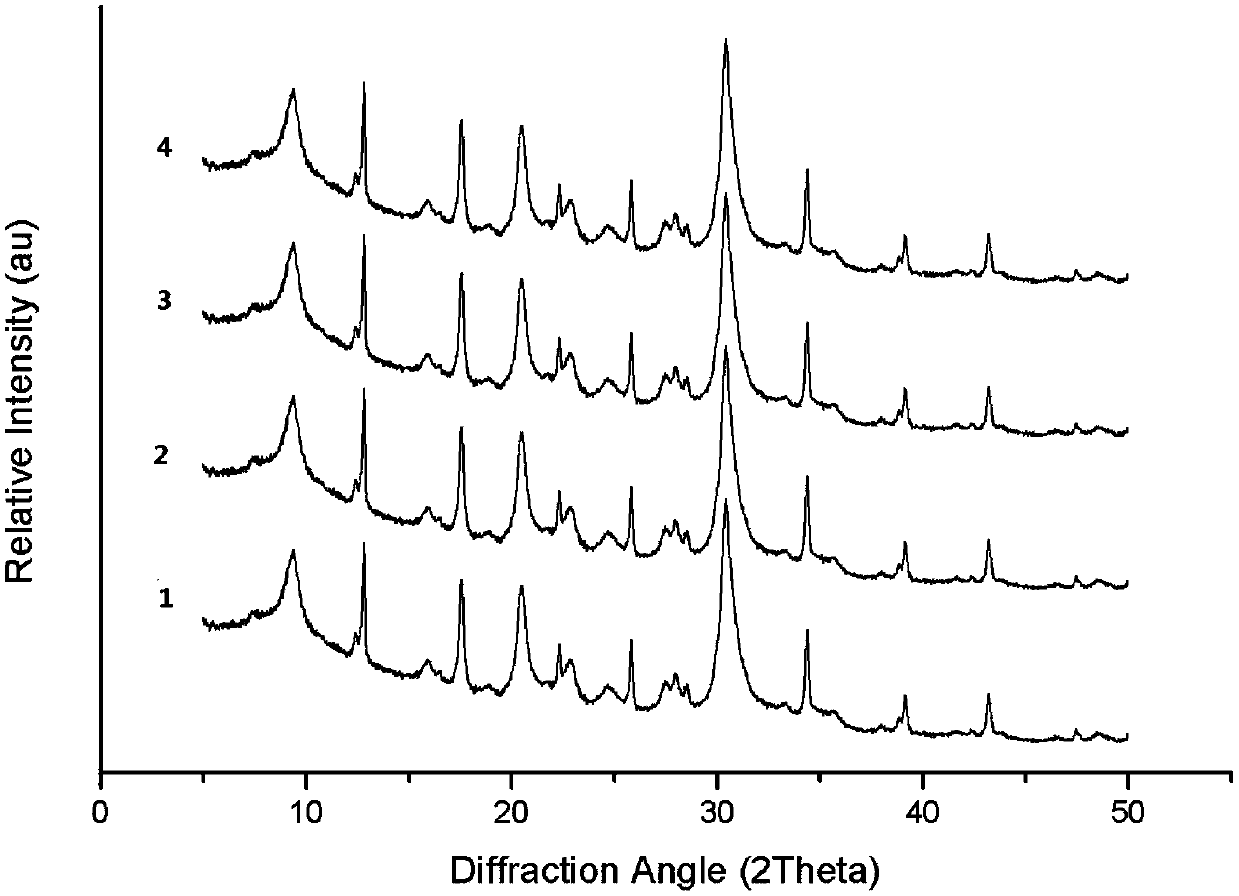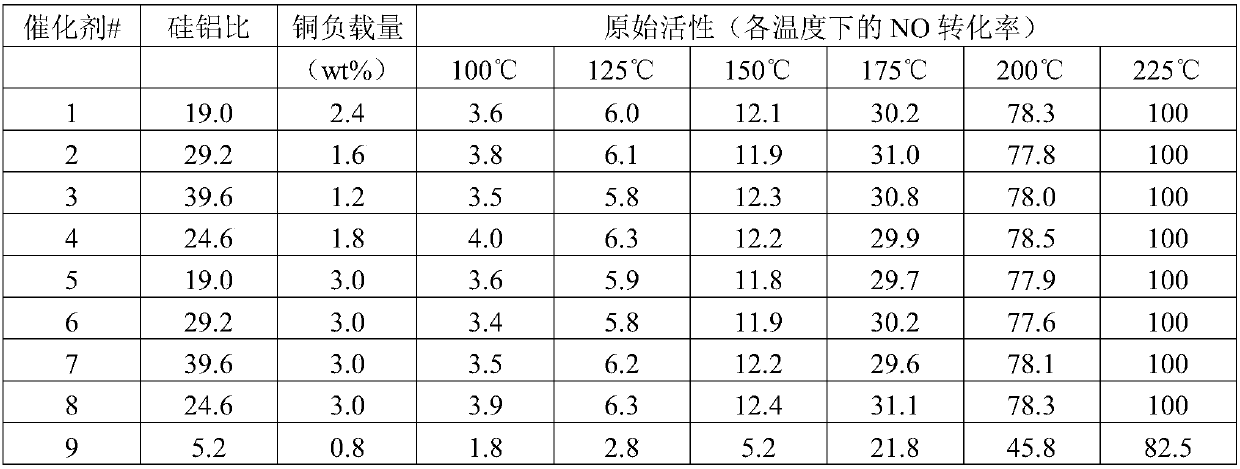Catalyst for cleaning and treating exhaust gas of internal combustion engine and preparation method thereof
A technology of catalyst and air, applied in the field of catalyst, can solve problems such as poor product effect and narrow range
- Summary
- Abstract
- Description
- Claims
- Application Information
AI Technical Summary
Problems solved by technology
Method used
Image
Examples
Embodiment 1
[0041] 0.8 g of sodium hydroxide, 10.5 g of potassium hydroxide (85%) and 27 g of deionized water were prepared into a solution, 1.06 g of sodium carbonate was added, and stirred to dissolve. Add 0.27 g of aluminum powder to dissolve. After the temperature of the solution dropped to room temperature, 12.0 g of diatomaceous earth was added and stirred for half an hour until the mixture was uniform. The molar composition of this mixture is Na 2 O:K 2 O: Na 2 CO 3 :Al 2 o 3 : SiO 2 :H 2 O=2:16:2:1:40:300. It was left to stand at room temperature for 2 hours, then transferred to a Teflon-lined stainless steel sealed kettle, heated to 120°C, and left to stand for 2 days. Then cool to room temperature, open the sealed kettle, pour off the supernatant, recover the white solid, and wash it three times with clear water. The resulting white powder was dried at 80°C.
[0042] Picture 1-1 It is the powder X-ray diffraction pattern of the product obtained in this embodiment, a...
Embodiment 2
[0044] Dissolve 3.6 grams of sodium hydroxide and 6.6 grams of 85% potassium hydroxide in 45.0 grams of deionized water, add 8.4 grams of sodium bicarbonate, and add 0.82 grams of sodium metaaluminate to dissolve. Then slowly add 18.0 grams of white carbon black while stirring, after stirring evenly, let stand at room temperature for 12 hours. The molar composition of this mixture is Na 2 O:K 2 O: NaHCO 3 :Al 2 o 3 : SiO 2 :H 2 O=10:10:20:1:60:500. The aged mixture was sealed in a Teflon-lined stainless steel autoclave, heated to 150 °C and allowed to stand for 3 days. Cool to room temperature, open the sealed kettle, pour off the supernatant, recover the white solid, and wash with water three times. The resulting white powder was dried at 80°C.
[0045] figure 1 -2 is the powder X-ray diffraction pattern of the product obtained in this embodiment, it can be known that the product is a zeolite molecular sieve with a chabazite structure. The chemical element analysis...
Embodiment 3
[0047] Dissolve 2.0 grams of sodium hydroxide and 13.2 grams of potassium hydroxide in 36.0 grams of deionized water, add 8.0 grams of sodium carbonate, and add 0.78 grams of aluminum hydroxide to dissolve. 60.0 g of 40% silica sol was slowly added with stirring. The molar composition of this mixture is Na 2 O:K 2 O: NaHCO 3 :Al 2 o 3 : SiO 2 :H 2 O=5:20:15:1:80:800. After the mixture was stirred evenly, it was directly transferred to a Teflon-lined stainless steel kettle without aging, heated to 150 degrees Celsius, and the reaction kettle was turned at a rate of 1 revolution per minute. Keep it for 5 days, then cool to room temperature, open the sealed kettle, pour off the supernatant, recover the white solid, and wash it three times with water. The obtained white powder is dried at 80 degrees centigrade to obtain the product.
[0048] figure 1 -3 is the powder X-ray diffraction pattern of the product obtained in this embodiment, it can be known that the product is...
PUM
 Login to View More
Login to View More Abstract
Description
Claims
Application Information
 Login to View More
Login to View More - R&D
- Intellectual Property
- Life Sciences
- Materials
- Tech Scout
- Unparalleled Data Quality
- Higher Quality Content
- 60% Fewer Hallucinations
Browse by: Latest US Patents, China's latest patents, Technical Efficacy Thesaurus, Application Domain, Technology Topic, Popular Technical Reports.
© 2025 PatSnap. All rights reserved.Legal|Privacy policy|Modern Slavery Act Transparency Statement|Sitemap|About US| Contact US: help@patsnap.com



